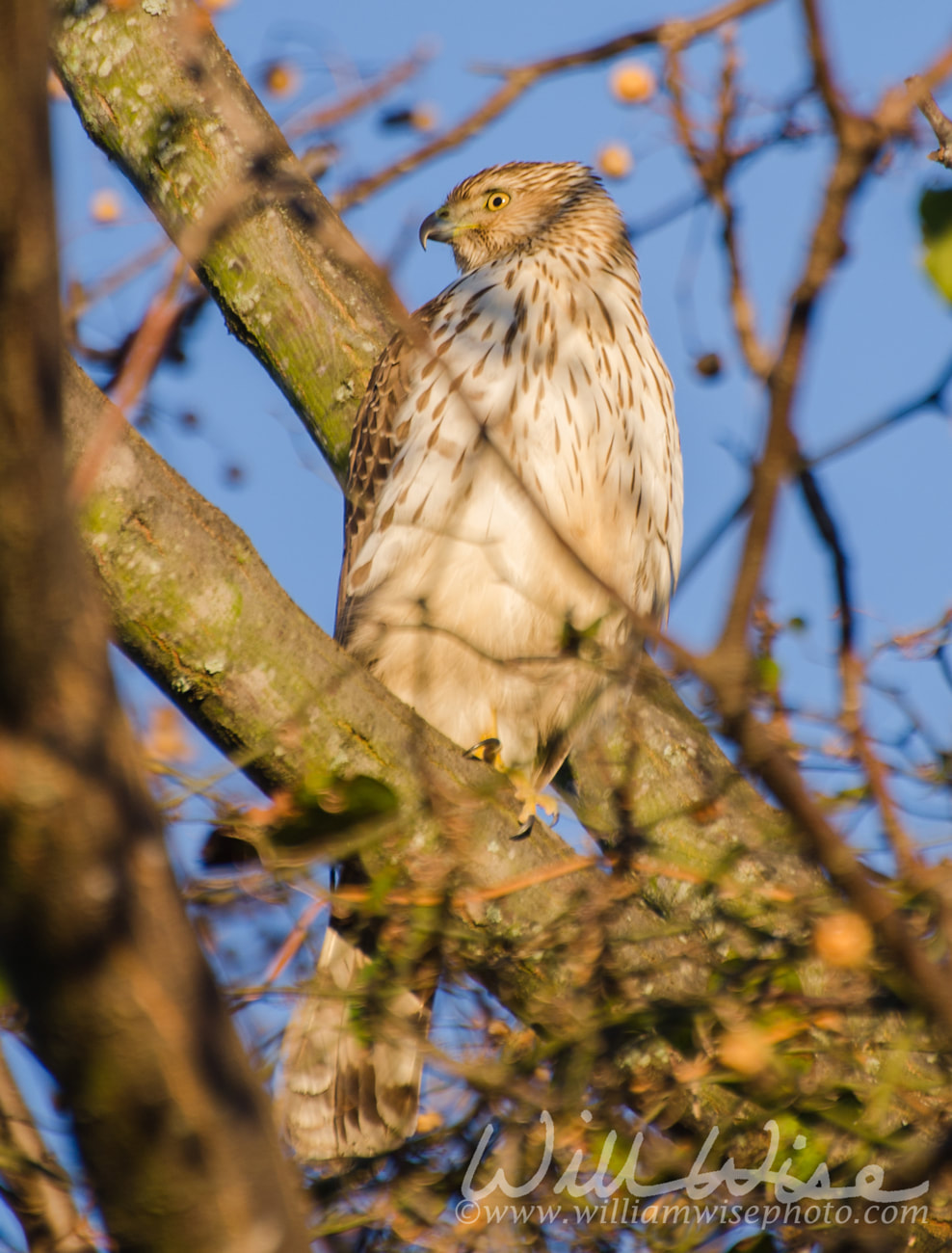|
January 31, 2013. Thursday, 5:27 PM – Watkinsville, Georgia. Winter is a great time to spot hawks. There are far fewer leaves on the trees and fewer other birds around, making the larger perched beauties easier to see. Now that the daylight hours are lengthening, my monotonous drive home is getting a bit more entertaining by watching for wildlife. While passing the Athens Seed Co. in Watkinsville, as I do each day, I was searching the tree line. Being a birdseed company, there are always plenty of doves and pigeons waiting in the surrounding trees anticipating quitting time and the exodus of the employees in order to alight upon and eat up whatever was spilled throughout the day. And on occasion, I’ve spotted a hawk nearby, perhaps waiting to alight upon and eat up the seed-seeking doves. But I never was able to get in a good Athens Seed Co. hawk photo. As I rounded the curve of Depot Street, I saw the larger, erect bird in the tree and slowed to a halt. A hawk! And perfectly poised for a photo. Judging by the long, banded tail, I initially thought I was shooting a Red-shouldered Hawk. But as I positioned the car under the gorgeous bird, the belly streaking was odd. Was it a juvenile Red-shouldered? Or something else? I got in a few good photos before it flew off. The next morning, hoping for a new Life List photo, I examined my shots. Long tail… bands on the tail… but wait, it is a really long tail, and rounded on the edges. Hmmm, a clue. And the belly pattern… it wasn’t rusty bands like the Red-shouldered’s markings. It was more streaked, like a Red-tailed Hawk’s… though more up on the chest and not across the belly. And the long, banded tail couldn’t possibly be that of the stubby Red-tail.
I grabbed Wheeler’s Photographic Guide to North American Raptors. “Best field marks are large square head when hackles are raised, then showing eye closer to beak than nape, stout legs, rounded tail (outer tail feathers are noticeably shorter than central ones) with a wide white band on the tip.” That’s it! But just to be sure, I emailed the photos to the Oconee Rivers Audubon Society president, and this was my reply: “You're absolutely right, it's a Cooper's! The long tail is an excellent clue for separating the accipter hawks (Cooper's and Sharp-shinned) from the buteos (Red-tailed, Red-shouldered). The brown upperparts and vertical breast streaking make this a young bird. Great photos!” A new one on the Life List!
0 Comments
Your comment will be posted after it is approved.
Leave a Reply. |
Categories
All
Archives
September 2025
|
|
All content is ©williamwisephoto.com. Please don't steal images. My images are available at dreamstime.com. Stock sales go into the shelter photography program.
|
In December 1993 I came to know the Designer and Creator of this wonderful planet and its creatures: Jesus Christ.
|
Donations help support the animal shelter adoption photography equipment and adoption website hosting and domain fees. Thanks for your support!
|



